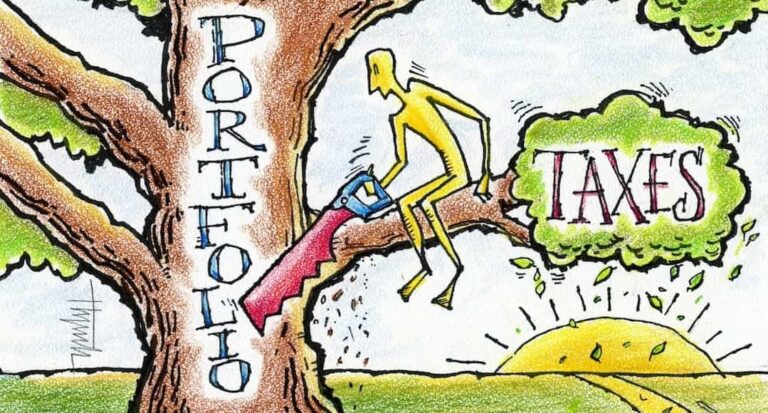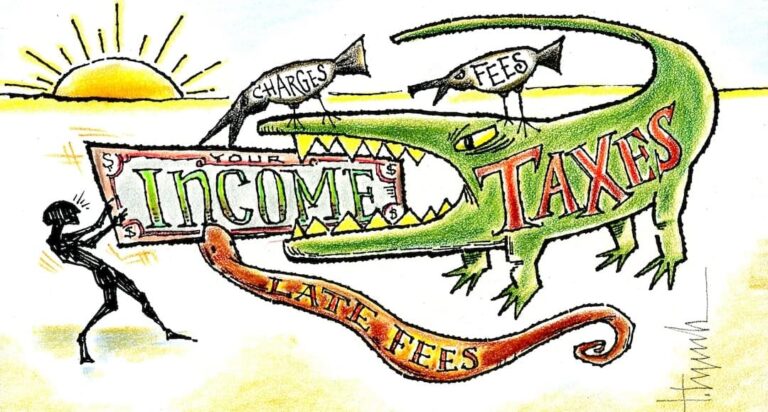
With the holidays behind us, it is time to brush ourselves off, get organized, and tackle the new year. However, in addition to the rigors of everyday life, it is vital to check in on your finances and make a few changes to protect your financial future. Below is some guidance on issues to consider and a downloadable checklist with more details so you can embrace 2025 with confidence.
New Year Reminders for 2025
1. Revisit Your Financial Plans
Many people like to start the new year by reviewing their financial plans or scheduling time with a financial advisor to formalize them for the first time. Naturally, we strongly encourage this behavior and recommend that you do it before anything else on this list because goal-setting will help you make better decisions. If you already have a financial plan, this is what the process involves.
- Examine your progress compared to your financial goals.
- Make updates to reflect the impact of any financial wins or shortfalls.
- Adjust your plan to accommodate existing or anticipated changes to your goals, living situation, health, work, marital status, dependencies, or risk tolerance.
- Review and make any necessary changes to your asset allocations within each account and holistically across your accounts, being mindful of any tax implications.
- Modify your emergency fund or develop a plan to replenish it if needed.
- Develop strategies to manage any age milestones or significant events on the horizon, such as legislation changes, a child going to college, a wedding, a reduction in income, or the sale of a significant asset. Here is a downloadable list of age milestones for reference.
As always, if you need help, be sure to reach out.
2. Review Your Employee Benefits

Look at your company’s employee benefits to ensure that you take full advantage of any money, stress, or time-saving opportunities. When you join an organization, there is often an overwhelming flurry of paperwork and decision-making, making it easy to overlook things irrelevant to you at the time. As your life unfolds, however, certain perks can become immensely helpful.
For example, besides health insurance, life and disability insurance, and a traditional 401k, most companies also offer a Roth 401k. Some even allow for after-tax contributions that you can convert to a Roth IRA, presenting the opportunity for a Mega Backdoor Roth and additional retirement savings.
3. Update Your Retirement Saving Contributions and Plan for RMDs
If you are working, update any automated contributions to your 401k and Individual Retirement Accounts (IRAs) to maximize your savings opportunities. At the very least, take full advantage of employer matching programs. The IRS contribution limits are as follows:
- 401k Contribution Limits for 2025
- $23,500, plus $7,500 for those aged 50 and older, or $11,250 for those aged 60 to 63
- IRA Contribution Limits for 2025
- $7,000, plus $1,000 for those aged 50 and older
Also, if you are subject to Required Minimum Distributions (RMDs), whether in your personal retirement accounts or inherited ones, make plans to meet those obligations to avoid penalties. If you don’t need the money and want to prevent the forced tax hit, consider making a Qualified Charitable Distribution (QCD) instead. With a QCD, you can funnel all or part of the distribution directly to a charity, thus bypassing Uncle Sam.
Finally, if you wish to make changes to these accounts, such as converting funds from a traditional 401k or IRA to a Roth 401k or Roth IRA, this would be an excellent time to speak to your financial advisor. They can help you navigate this strategy in the most tax-efficient manner.
4. Revisit Your HSA or FSA Contributions
Adjust your health savings account (HSA) contributions if you have a high-deductible healthcare plan. The 2025 HSA contribution limits are $4,300 for individuals and $8,550 for families, with a $1,000 catch-up contribution for people 55 and older.
People participating in Flexible Spending Arrangements (FSAs) can contribute up to $3,300 in 2025. Your spouse can do the same if they have a similar plan through their employer. However, please refrain from overfunding your FSA account(s). You must use (or lose) that money by the end of the year unless your plan allows for carryovers.
Also, confirm that you maxed out your contributions for 2024. You have until April 15th of this year to make those contributions.
5. Consider Other Forms of Savings to Achieve Your Goals

Suppose you have reached the maximum savings potential of your retirement plans and wish to squirrel away more (Congratulations!). That can be a wonderful opportunity, but it is also where we see significant mistakes made.
Extra money often leads to “ego investments,” such as investing directly in a friend’s business, real estate ventures, alternative investments, or day trading. Before making such decisions, weigh the options against more mainstream investments. Consider not only expected return but liquidity, costs of ownership, legal issues (including but not limited to partnership disputes and estate planning complications), and, most importantly, your goals for this money. For comparison, mainstream options would include the following:
- Brokerage Accounts – invest in the long run without the liquidity constraints or tax advantages of retirement accounts. In these accounts, you can buy stocks, bonds, ETFs, etc.
- Certificates of Deposit (CDs) – a great way to earn a reliable return on money you need soon, but not immediately.
- High-interest Savings Accounts – If you have been saving cash for a home remodel or vacation, talk to your bank about a high-yield savings account. Given the rise in interest rates, there are options today that did not exist before.
6. Review Potential Areas of Risk or Opportunity
Take a moment to reflect on and update any debt arrangements or protections you have in place. There may be opportunities to save money today or protect yourself or your loved ones from unexpected expenses in the future. For example, here are a few things to consider:
- Eliminate or Renegotiate Debt
Interest rates may come down in the coming months. If you have high-interest mortgages or student loans, look for an opportunity to refinance. However, if you carry a high-interest credit card balance, please pay that off first.
- Update or Purchase Insurance
Review any life, disability, homeowners, renters, or auto insurance policies to ensure you have the right level of coverage and the best rates. For instance, sometimes, you can reduce costs by agreeing to a higher deductible. Also, if you are in your mid-50s, now is a great time to start considering long-term care insurance because your rates may still be relatively low. - Beneficiary Changes
Revisit the beneficiaries of your retirement plans, insurance plans, savings accounts, etc., and make any necessary changes. While that is usually the last thing on our minds when dealing with a death or divorce, it is essential to keep those details current. - Review Your Estate Plans – If it has been a while since you updated your estate planning documents (trusts, wills, power of attorney, etc.), consider scheduling a visit with your lawyer. Any major life event can warrant a change. Examples include the birth of a child, relocating, a change in your health or marital status, or a death in the family.
7. Prepare to File Taxes

Lastly, please set aside time to gather everything needed to prepare your taxes. If you work with a Certified Public Accountant (CPA), they will provide you with a list, but to get you started, here are the basics.
Create a file where you can stash your last round of tax returns, plus any 1099s, W-2s, relevant login and bank account information, and any information related to deductions (retirement contributions, educational and medical bills, mortgage and property tax info, charitable donations, etc.). If you own a business, you must also update your financial statements and any tax deductions related to running your company. Then, stay on top of critical dates.
- Jan 15 – Due date for 4th quarter estimated taxes.
- Jan 31 – Deadline for sending W-2s to employees and 1099s to contractors.
- Mar 17 – S-Corp tax deadline
- Apr 1 – The deadline for taking RMDs if you turned 73 the prior year.
- Apr 15 – Due date for personal taxes and Q1 estimated taxes. Most corporate taxes are due, too. Plus, wrap up any IRA and HSA contributions for the prior year.
- Jun 17 – Due date for Q2 estimated taxes.
- Sep 16 – Due date for Q3 estimated taxes.
- Dec 31 – Deadline for taking RMDs for the current year. That is also the deadline for many tax strategies you may wish to implement in the current year (i.e., Roth IRA conversions, charitable contributions, tax loss harvesting, etc., must happen by Dec 31).
Business owners may be subject to other deadlines depending on your corporate structure.
The Bottom Line
Reviewing your finances can be tedious, but you will be glad you took the time to get everything squared away. You can even bookmark this page for future reference, as we plan to update it yearly. And again, don’t hesitate to reach out if you need help. For additional details, download the checklist below.
Happy New Year!!

Editor’s Note: This blog post was originally published in January 2024 and then updated for accuracy and thoroughness in January 2025.
Author
-

Kevin Caldwell is a principal at Golden Road Advisors and a CERTIFIED FINANCIAL PLANNER™ (CFP®️) practitioner with over 15 years of experience in the financial services industry. In addition to providing advice and guidance to clients, he regularly contributes to publications such as Kiplinger, Yahoo! Finance, Dalbar, and MarketWatch.
View all posts



